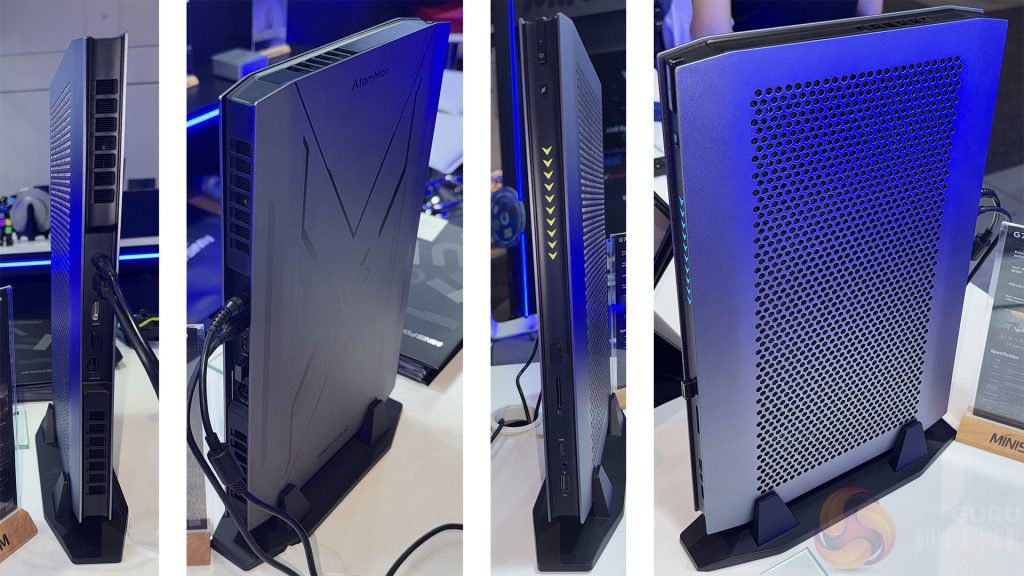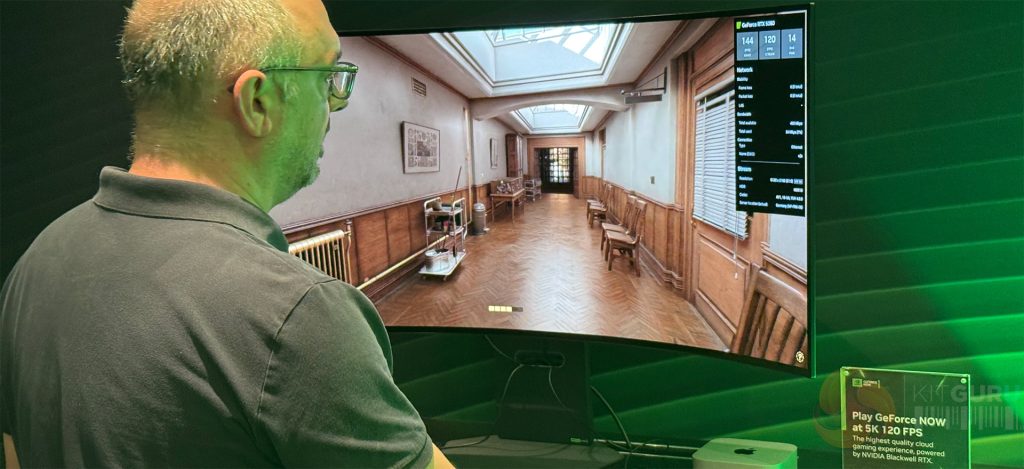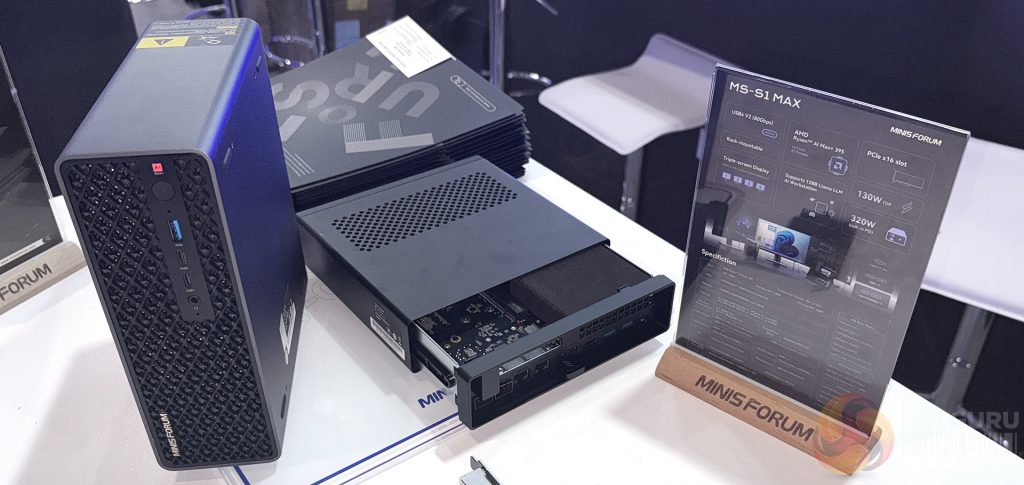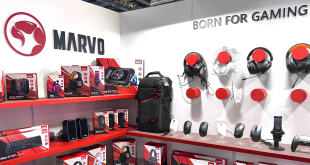IFA 2025 in Berlin has just closed its doors, but the event has once again provided a platform for emerging companies to showcase their latest technology. Among them was Minis Forum, a relatively young brand that has been targeting the compact computing segment since its founding in 2018. With its HQ in California, logistics in Hong Kong and manufacturing base in Shenzhen, it's clear that they intend to go after all markets with their Mini PC line-up. Two products that they showed at IFA really caught our attention – the G7 Pro and the MS-S1 Max.
The G7 Pro: Laptop Technology Reimagined for the Desktop
One of the centrepieces of the Minis Forum stand was the new G7 Pro, a compact desktop that borrows heavily from laptop design. With its tall, slim profile and a weight of just under 2.5kg, the system could easily be mistaken for a console. Underneath the surface, however, it carries specifications that place it firmly in the high-performance desktop class.
The G7 Pro is powered by Intel’s Core i9-14900HX processor, paired with Nvidia’s RTX 5070 laptop graphics. The GPU brings support for DLSS 4, Nvidia’s latest deep learning super-sampling technology, aimed at providing higher frame rates with improved visual fidelity. Memory support extends up to 128GB of DDR5 across two SODIMM slots, while storage is catered for with two M.2 connectors, offering both PCIe Gen 4 and Gen 5 options.
Connectivity reflects the company’s attempt to keep pace with current standards. The G7 Pro includes USB4, HDMI 2.1, Wi-Fi 7, and Bluetooth 5.4, all powered by an external 19V adapter. This combination suggests a system that could sit in a living room environment, offering both gaming and productivity without the bulk of a traditional tower.
Nvidia’s wider strategy could also make devices like the G7 Pro more relevant to home users in the near future. The RTX company has been promoting its “AI in the home” vision, with projects such as Nvidia ACE – a framework for AI-driven non-player character interactions in games – and Project G-Assist, initially aimed at providing community-driven plug-ins for gamers. Both initiatives could evolve into broader AI assistants, potentially positioning small form factor PCs as central hubs for gaming and household AI applications. Given that your PC is always likely to be the most powerful system in your home – there's got to be a chance that nVidia has a master plan for becoming your home computing hub.
The exact direction that gaming will take in the 5-10 year span is hard to anticipate. While there are probably always going to be benefits to have a huge/fast GPU in your home, KitGuru was recently given a demonstration of nVidia's latest GeForce Now ecosystem – delivering 5K gaming at 120 fps from a remote Blackwell server.
The MS-S1 Max: An AI-Oriented Mini Workstation
The second major release from Minis Forum is the MS-S1 Max, a system that follows the more traditional NUC-style chassis, though in a slightly larger format. This additional space is partly due to its integrated 320W power supply, though the system itself has a maximum TDP of around 130W. The design choice may lead to relatively quiet operation, as the power headroom should reduce thermal stress under load.
At the core of the MS-S1 Max is AMD’s Ryzen AI Max+ 395 processor, also referred to as Strix Halo. While branding differs depending on the context, both names describe the same architecture. This chip integrates high-performance CPU cores with enhanced AI acceleration, aiming to position itself as a hybrid between traditional processing and machine learning tasks.
The system supports up to 128GB of LPDDR5 memory at 8,000MT/s and offers significant connectivity. Alongside a PCI Express x16 slot, which could house a discrete graphics card for expanded AI or graphics capability (you would need to check on size/power draw), it includes dual 10GbE network ports and multiple high-speed USB connections. Two USB4 v2 ports provide bandwidth up to 80Gbps, allowing for fast external storage or high-resolution display configurations.
Supporting 128B Llama LLM
Perhaps the most striking claim from Minis Forum is that the MS-S1 Max can support a 128B Llama large language model (LLM). In AI terminology, “128B” refers to the parameter count of the model – 128 billion trainable parameters. Larger models generally mean more nuanced outputs and a closer approximation of human-like reasoning in text-based tasks, though they also demand substantial memory and processing resources.
In practice, a system like the MS-S1 Max would not train such a model from scratch (that would require supercomputing infrastructure), but it could host and run inference tasks using a pre-trained model. This opens potential applications in fields such as private AI deployment, where companies want to run powerful LLMs locally rather than rely on cloud services.
Target Markets for the MS-S1 Max?
The inclusion of rack-mount capability suggests Minis Forum is positioning the MS-S1 Max for semi-professional and small enterprise use. Potential markets include start-ups exploring AI workloads, research labs requiring compact inference clusters, and businesses experimenting with private deployment of generative AI tools. For these organisations, the ability to slot several units into a rack could provide a modular and scalable approach to AI experimentation without committing to full-scale datacentre infrastructure.
At the time of going to press, neither of these new products were on the UK site for Minis Forum.
Discuss on our Facebook page, HERE.
KitGuru says: Minis Forum’s G7 Pro shows how laptop-derived engineering can deliver powerful performance suited to gaming and potential AI-in-the-home applications. The MS-S1 Max, meanwhile, reflects the industry’s shift toward AI processing, offering both high-speed connectivity and the ability to handle models at the cutting edge of generative AI.
 KitGuru KitGuru.net – Tech News | Hardware News | Hardware Reviews | IOS | Mobile | Gaming | Graphics Cards
KitGuru KitGuru.net – Tech News | Hardware News | Hardware Reviews | IOS | Mobile | Gaming | Graphics Cards





